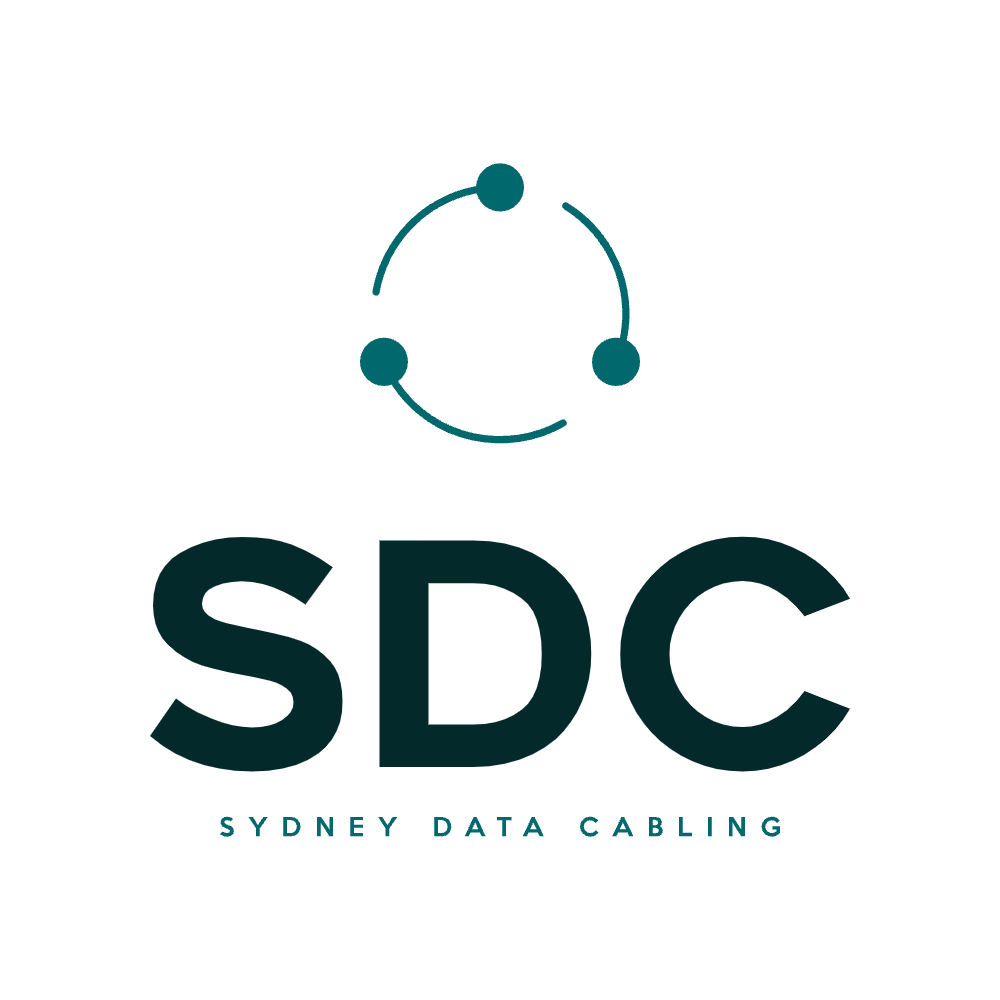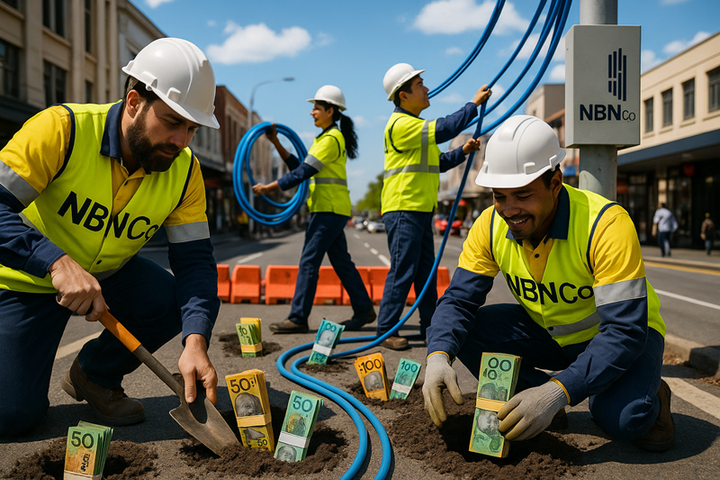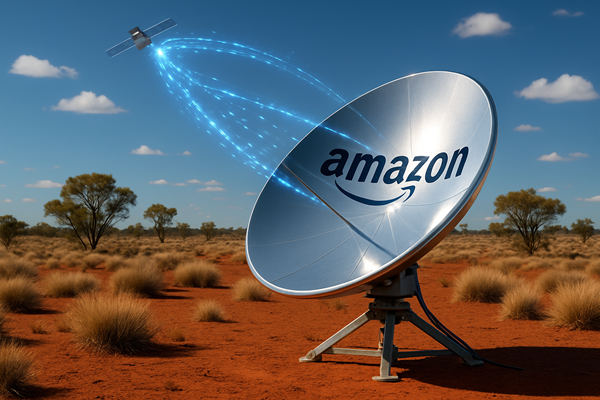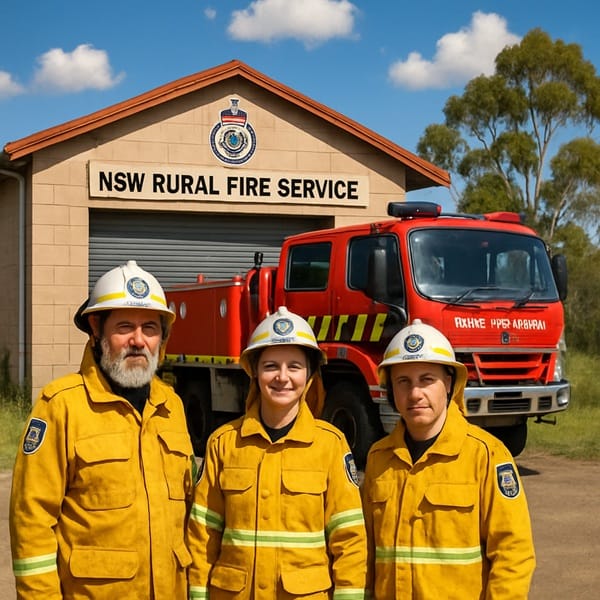Australians are taking up NBN Co’s free full‑fibre upgrades
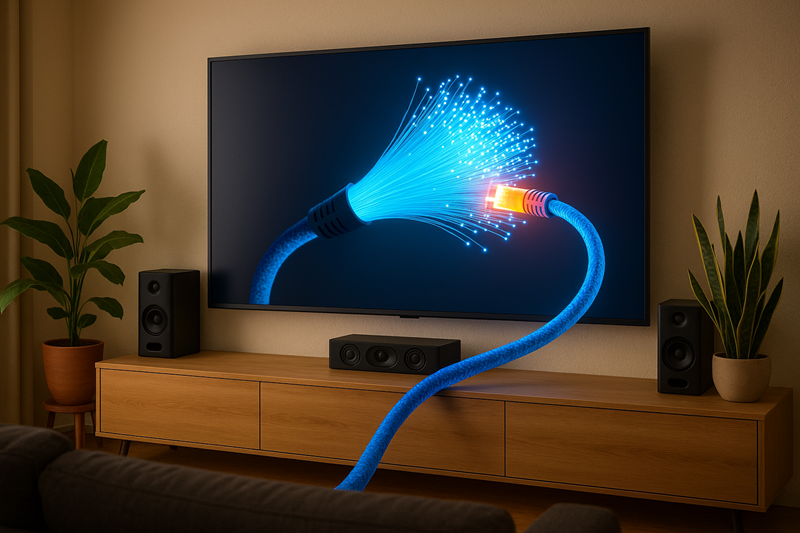
Australia just crossed an inflection point in fixed‑line broadband: full fibre (FTTP) has overtaken fibre‑to‑the‑node (FTTN) as the most common NBN access technology. That shift isn’t just symbolic — it’s opening the door to much faster plans (think 500–2,000 Mbps), better reliability, and capacity for dozens of connected devices in each home and business.
The tipping point: FTTP tops FTTN
NBN Co’s FY25 results show FTTP connections grew from ~2.165 million to ~2.665 million in a single year (up 23%), while FTTN has continued to decline. TechRadar, reporting on those results, notes FTTN dropped from just over 2.78 million (Jun 30, 2024) to ~2.5 million by August 2025 — the moment FTTP took the lead.
Chart 1 — Active connections by technology (FTTP vs FTTN)
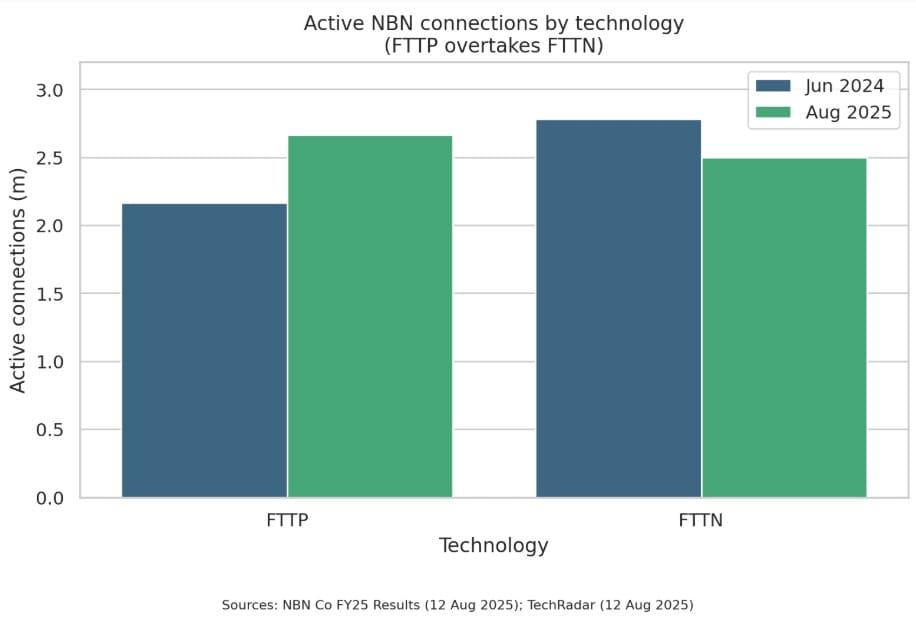
What’s driving this?
Free fibre lead‑ins for eligible copper areas under NBN’s Fibre Connect program (you order a high‑speed plan, NBN installs fibre to your premises at no charge). 2) Imminent speed tier accelerations that multiply download/upload rates on FTTP and HFC.
Speed is getting (much) faster — at the same price point
From September 14, 2025, NBN will accelerate its top residential wholesale tiers on FTTP/HFC:
- Home Fast jumps from 100/20 to 500/50 Mbps
- Home Superfast from 250/25 to 750/50 Mbps
- Home Ultrafast lifts uploads to ~1000/100 Mbps
- Plus a new “Home Hyperfast” 2,000 Mbps wholesale tier (2,000/200 on FTTP; 2,000/100 on HFC)
Retailers decide timing, but the wholesale change unlocks real‑world plans that are dramatically faster for the same logical tier. Some ISPs have already launched NBN 500 and NBN 750 “early‑bird” plans around the AU$69–$80 mark, illustrating the value shift that’s underway.
That demand is visible in the mix: services on ≥100 Mbps climbed from 24% to 32% year over year.
Chart 2 — Share of services on ≥100 Mbps plans
Why now is the best time to upgrade
1) The network is ready — and eligibility is broad
Government and NBN investment means ~90% of the fixed‑line footprint will be eligible for near‑gigabit and multi‑gigabit tiers by December 2025 (≈ 10.2 million premises), up from 9.1 million by December 2024. If you’re in an FTTN/FTTC area made “upgrade‑ready,” the fibre lead‑in is free once you order a qualifying plan.
Chart 3 — Premises eligible for top tiers (Dec 2024 vs Dec 2025 target)
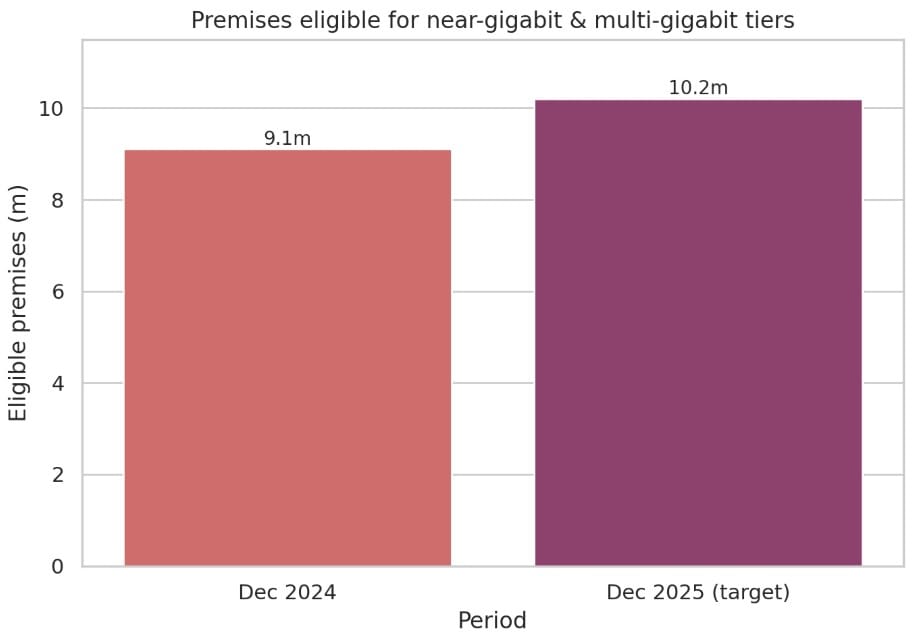
2) The fibre machine is moving faster
FY25 saw ~814k premises “ready for order” and ~431k actual upgrades completed, more than doubling the prior year’s pace. Cumulatively, NBN reports >805k completed fibre upgrades to date. In short, the program is scaled and delivering.
Chart 4 — Fibre Connect momentum in FY25
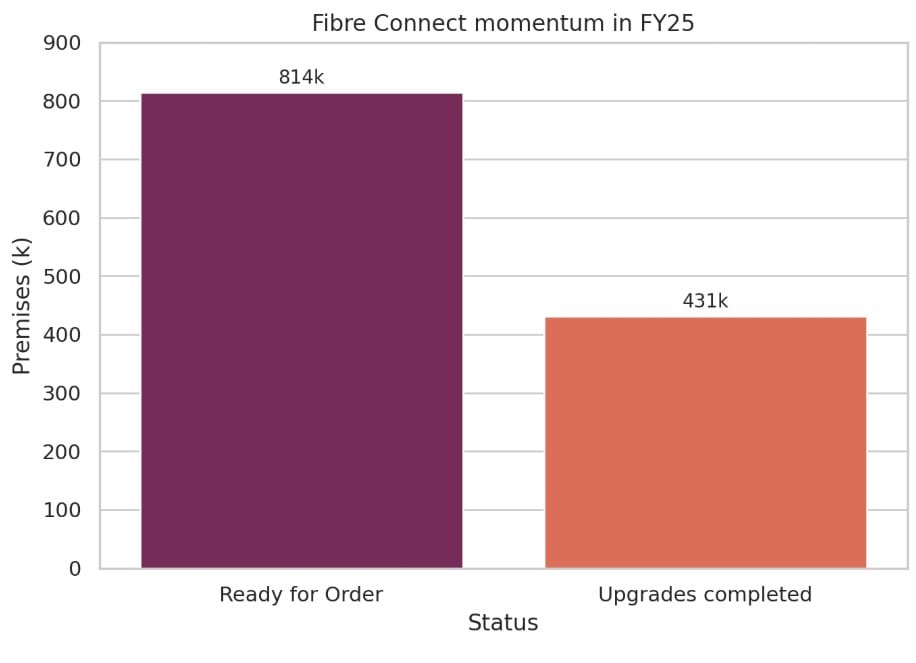
3) Your household or office needs the headroom
The average NBN premise downloaded 508 GB/month in June 2025 (up from 460 GB a year earlier). On FTTP, usage averaged 606 GB — people do more when the connection is fast and stable. NBN also highlights that households now average ~25 connected devices, forecast to ~44 devices by 2030. More devices and richer apps (4K/8K, cloud gaming, AI, AR/VR) all point to more speed, more upload, and lower latency.
Chart 5 — Data usage rising (and FTTP users do even more)
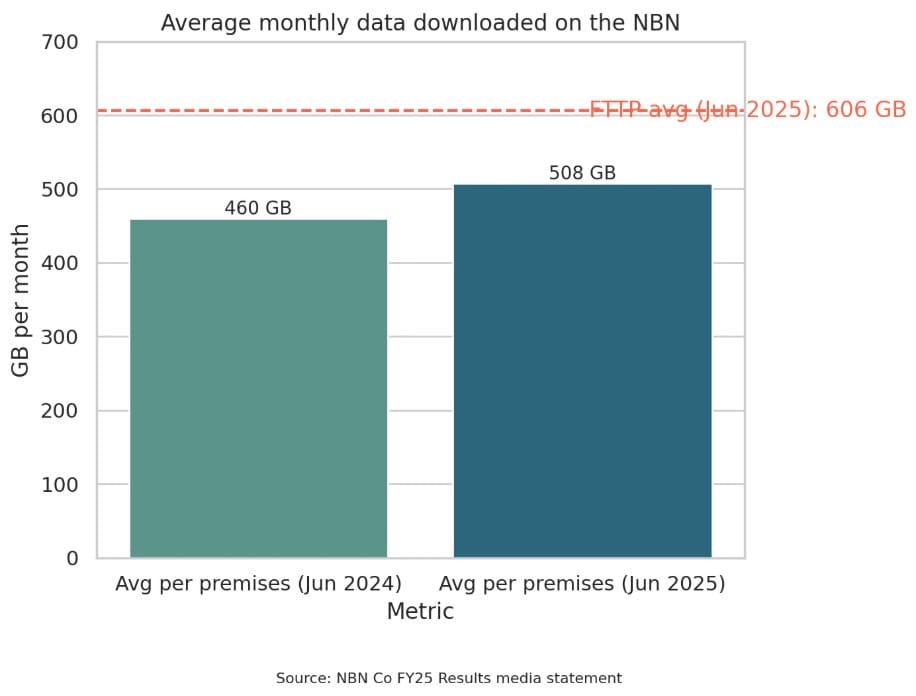
What if you’re not eligible yet?
In January 2025 the Government committed up to AU$3b (plus ~$800m from NBN Co) to extend full‑fibre options to the final ~622,000 FTTN premises by 2030, with >95% expected to gain an FTTP path (the remainder to be solved case‑by‑case). More than half of these premises are in regional Australia — so if you’re outside a metro, the pipeline is specifically coming your way.
How to upgrade (and what to consider)
- Check your address with the NBN eligibility tool. If you see “Fibre Upgrade” availability, you can trigger a free FTTP lead‑in by ordering an NBN 100 (or higher) plan with your retail provider.
- Pick the right tier. With 500/50 replacing the old 100/20 at the wholesale level, many households will want to step up instantly — especially with hybrid work, console/PC game downloads, cloud backup, and multi‑device streaming.
- Mind your Wi‑Fi and LAN. If you adopt 500–750 Mbps (or higher), ensure your router and in‑home cabling can deliver those speeds on Wi‑Fi 6/6E or wired Gigabit (or multi‑Gig) ports. (This is the #1 bottleneck we see after an FTTP install.)
The big picture: better value, fewer faults, future‑proof
Fibre not only boosts speed; it’s also less fault‑prone than copper, avoids sync‑rate variability with line length, and supports cleaner uploads for cloud workflows and collaboration. That’s why Australians are upgrading their NBN in record numbers, and why retailers are already pricing faster tiers competitively. Put simply: the economics and the experience now favour fibre.
For Businesses
If you’re upgrading an office or a site that relies on uptime, consider business‑grade options alongside residential FTTP:
- Business NBN on FTTP with enhanced SLAs and priority fault handling.
- Ethernet over fibre for guaranteed bandwidth, low latency, and stronger SLAs where it matters.
For quick internet, NBN Services, Cabling Services or anything else Cable related, contact SDC today.
